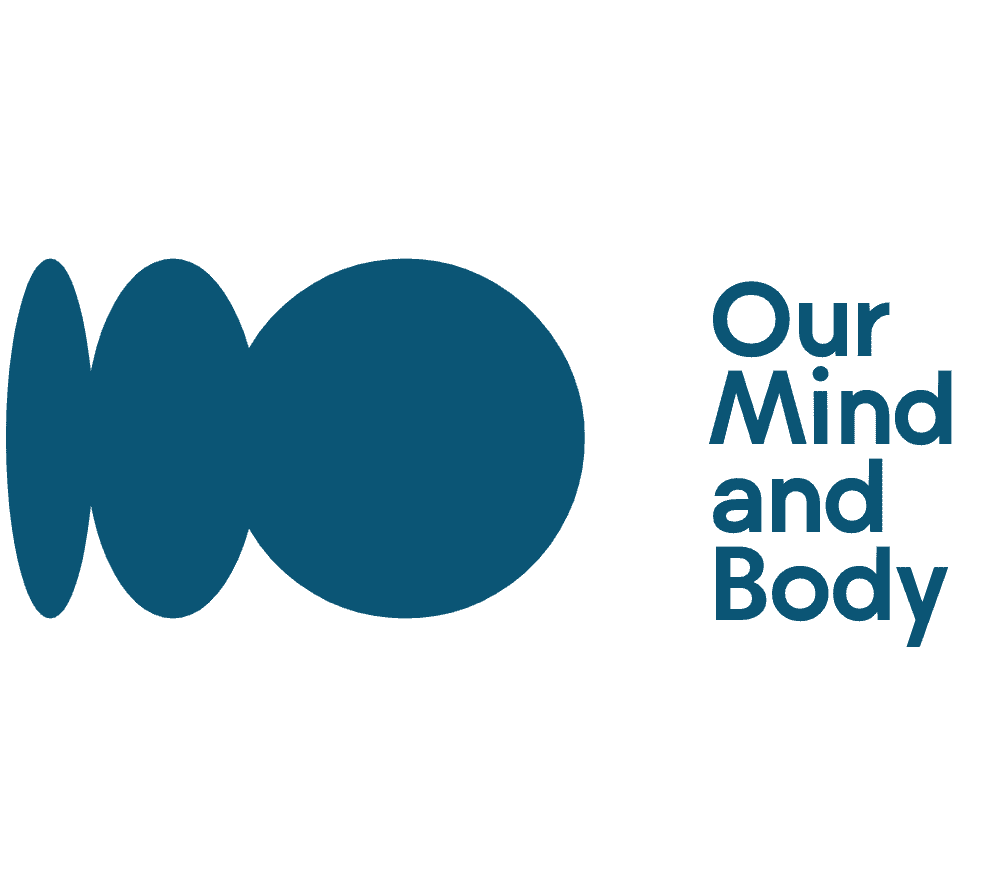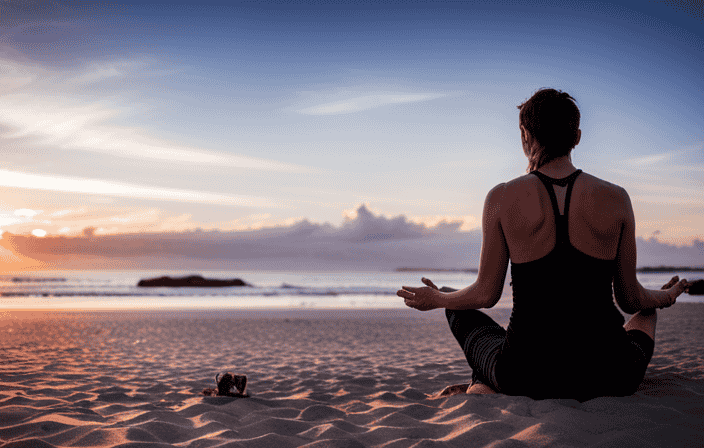Meditation
The Power Of A Calm Mind: Finding Peace And Stress Relief

In today’s fast-paced and chaotic world, the importance of finding inner peace and reducing stress has become more crucial than ever. Studies show that a staggering 75% of doctor visits are related to stress-related illnesses. This alarming statistic underscores the importance of cultivating a calm mindset to combat the harmful effects of stress.
In this article, we will explore the power of a calm mind and its ability to bring us peace and relief from the burdens of everyday life. By understanding the benefits of relaxation, the art of letting go, and the importance of prioritization and positive thinking, we can unlock the key to finding lasting tranquility.
Key Takeaways
- Calmness is a powerful weapon against challenges.
- Taking time for oneself is both productive and necessary.
- Simplifying life can help achieve balance.
- Painful experiences can be opportunities for learning and growth.
The Power of Calmness
Calmness is regarded as a powerful tool in facing challenges and achieving clarity and truth, as well as an essential aspect of productivity and well-being.
By practicing mindfulness techniques, individuals can cultivate a state of calmness that allows them to navigate through life’s difficulties with greater ease. Mindfulness practices, such as deep breathing exercises and meditation, have been shown to reduce stress, improve focus, and increase self-awareness.
Additionally, the use of stress relief products, such as stress balls or fidget spinners, can provide a tangible outlet for releasing tension and promoting relaxation. These tools can serve as reminders to take a break and engage in calming activities, ultimately enhancing overall well-being.
Incorporating mindfulness practices and utilizing stress relief products can help individuals find peace and alleviate the detrimental effects of stress in their lives.
Benefits of Relaxation
The practice of relaxation offers numerous advantages for individuals seeking to reduce tension and promote well-being. It not only provides a soothing escape from the demands of daily life, but it also has a profound impact on mental and physical health.
The benefits of mindfulness, a key component of relaxation, include increased self-awareness, improved concentration, and enhanced emotional regulation. By cultivating a calm and focused mind, individuals can better manage stress, anxiety, and negative emotions.
Moreover, relaxation promotes the importance of self-care, reminding individuals to prioritize their own well-being. Taking time to relax and unwind allows for rejuvenation and renewal, leading to increased productivity and overall satisfaction.
By incorporating relaxation techniques into daily routines, individuals can experience the transformative power of a calm mind and find peace amidst the chaos of life.
Letting Go for Peace
Letting go of attachments and embracing detachment allows individuals to cultivate a sense of inner tranquility and freedom from the burdens of the past. By relinquishing the need for control, individuals can find inner peace and experience a profound sense of liberation.
The practice of letting go involves releasing the grip on expectations, outcomes, and the constant need for certainty. It requires accepting that some things are beyond our control and allowing life to unfold naturally. Letting go does not mean giving up or being passive, but rather it is a conscious choice to detach from the need to control every aspect of our lives.
It allows us to live in the present moment and appreciate the beauty and possibilities that arise when we surrender to the flow of life. Finding inner peace through letting go is a transformative process that enables individuals to experience a profound sense of freedom, serenity, and joy.
Prioritizing and Boundaries
Prioritizing tasks and setting boundaries allows individuals to effectively manage their time and energy, ensuring that they allocate resources to the most important and impactful activities.
In the context of finding peace and stress relief, setting boundaries at work is crucial. By clearly defining work hours, limiting distractions, and establishing realistic expectations, individuals can prevent work from encroaching on their personal lives and maintain a healthy work-life balance.
Additionally, prioritizing self-care is essential for maintaining a calm mind. Engaging in activities such as exercise, meditation, and spending time with loved ones helps individuals recharge and rejuvenate.
By recognizing the importance of self-care and setting boundaries to protect it, individuals can cultivate a sense of peace and well-being, ultimately reducing stress and promoting overall mental and emotional health.
Choosing Positive Thoughts
Choosing positive thoughts involves consciously selecting thoughts that can impact stress levels and recognizing the importance of focusing on things within one’s control. By identifying warning signs of stress, individuals can proactively choose thoughts that promote relaxation and well-being.
It is essential to be aware of the physical and emotional cues that indicate stress, such as increased heart rate, irritability, or difficulty sleeping. This self-awareness enables individuals to intervene early and redirect their thoughts towards more positive and calming perspectives.
Additionally, exploring stress relief products can provide valuable tools for promoting positive thoughts and reducing stress. Stress relief products such as fidget toys, stress balls, or coloring books can serve as effective distractions and channels for redirecting negative thoughts.
By incorporating these practices into daily life, individuals can cultivate a calm mind and find peace amidst the challenges of life.
Relaxation Techniques
Relaxation techniques serve as the gentle breeze that soothes the turbulent waters of the mind, allowing for a tranquil oasis amidst the chaos of daily life.
Deep breathing exercises are one such technique that promotes relaxation by activating the body’s natural relaxation response. By taking slow, deep breaths and focusing on the sensation of the breath entering and leaving the body, individuals can experience a sense of calm and reduce stress levels.
Mindfulness practices, on the other hand, involve paying attention to the present moment with non-judgmental awareness. This practice helps individuals become more attuned to their thoughts, feelings, and bodily sensations, allowing them to better manage stress and find peace.
Overall, incorporating deep breathing exercises and mindfulness practices into one’s routine can be powerful tools in achieving a calm mind and finding stress relief.
Creating a Calm Environment
Decluttering and organizing spaces can contribute to a serene environment that fosters relaxation and reduces overwhelming stimuli. By eliminating clutter, individuals can create a sense of order and calmness in their surroundings. This process not only creates physical space but also promotes mental clarity and reduces stress.
In addition to decluttering, incorporating soothing scents can further enhance the calming atmosphere. Aromatherapy has been shown to have a positive impact on mood and stress levels. Scents such as lavender, chamomile, and jasmine have been found to promote relaxation and reduce anxiety. These fragrances can be incorporated into the environment through essential oils, candles, or diffusers.
To provide a visual representation, the following table illustrates the benefits of decluttering and incorporating soothing scents in creating a calm environment:
| Benefits of Decluttering Spaces | Benefits of Incorporating Soothing Scents |
|---|---|
| Reduces visual distractions | Promotes relaxation and reduces anxiety |
| Enhances mental clarity | Improves mood and overall well-being |
| Creates a sense of order | Fosters a peaceful atmosphere |
| Reduces stress | Enhances the calming environment |
| Promotes a sense of calmness | Encourages relaxation and tranquility |
Time Management and Prioritization
Transition: In order to create a calm environment conducive to finding peace and stress relief, it is essential to address the aspect of time management and prioritization. By effectively managing time and setting goals, individuals can alleviate stress and create a sense of balance in their lives.
Setting realistic goals and deadlines allows for efficient planning and helps individuals stay focused on their priorities. Utilizing effective planning tools, such as calendars or task management apps, can aid in organizing tasks and ensuring that important responsibilities are not overlooked. Additionally, learning to delegate tasks when possible can help distribute the workload and prevent overwhelm.
By mastering the art of time management and prioritization, individuals can create a structured and organized approach to their daily lives, leading to increased productivity and decreased stress levels.
- Embracing a sense of purpose and direction
- Gaining a sense of control over one’s time
- Reducing feelings of overwhelm and chaos
- Achieving a sense of accomplishment and fulfillment
Frequently Asked Questions
How can I effectively incorporate relaxation techniques into my daily routine?
Incorporating relaxation techniques into your daily routine can be a powerful tool for reducing stress. By setting aside dedicated time each day for practices such as deep breathing exercises, meditation, or engaging in hobbies, you can create a calming and rejuvenating environment for yourself.
What are some practical ways to silence negative thoughts and maintain a positive mindset?
Practical ways to silence negative thoughts and maintain a positive mindset include practicing positive affirmations and engaging in mindfulness meditation. These techniques have been shown to reduce stress, improve mental well-being, and enhance resilience.
How can I create a calm environment in my home or workspace?
To create a serene atmosphere at home or workspace, essential elements include decluttering, incorporating soothing colors and scents, using relaxation techniques before sleep, limiting exposure to stressful triggers, and designating a peaceful area for relaxation. Tips for designing a peaceful and productive environment can include incorporating natural light, organizing and optimizing space, and incorporating plants or nature elements.
What are some strategies for effectively managing my time and prioritizing tasks?
Time management techniques involve setting realistic goals, utilizing planning tools, delegating tasks, and focusing on priorities. Task prioritization strategies include identifying important tasks, balancing work and personal life, and practicing self-care for optimal productivity.
How can I develop healthy coping mechanisms to deal with stress and anxiety?
Developing healthy coping mechanisms to deal with stress and anxiety involves practicing self-care. This includes engaging in activities like journaling or art to express emotions, seeking therapy or counseling, practicing gratitude and positive affirmations, and connecting with supportive communities.
Conclusion
In conclusion, the power of a calm mind is a valuable tool for finding peace and relieving stress. By prioritizing and setting boundaries, individuals can effectively manage their time and create a calm environment conducive to relaxation.
Choosing positive thoughts and silencing negative ones can further contribute to a positive mindset. Engaging in relaxation techniques such as deep breathing exercises and meditation can help cultivate a sense of calmness.
While some may argue that finding peace is easier said than done, adopting healthy coping mechanisms and practicing mindfulness can lead to lasting peace and stress relief. Ultimately, the ability to achieve peace and tranquility lies within each individual’s grasp, and with dedication and practice, a calm mind can be a source of strength and serenity.
Meet Kalinda, the passionate and visionary Editor-in-Chief of OurMindAndBody.com. Kalinda is a beacon of light in the realm of holistic well-being, and her mission is to positively impact the lives of others by inspiring them to embrace a healthier and more fulfilling lifestyle.
With a deep-rooted love for meditation, yoga, and spirituality, Kalinda’s journey toward self-discovery and personal growth started at a young age. She found solace and strength in these practices, which not only helped her cope with the challenges of life but also provided her with a profound sense of purpose. Eager to share the transformative power of these ancient disciplines, Kalinda embarked on a path to spread awareness and understanding.
Meditation
Flower Power: Stress Relief Through Fragrant Blooms
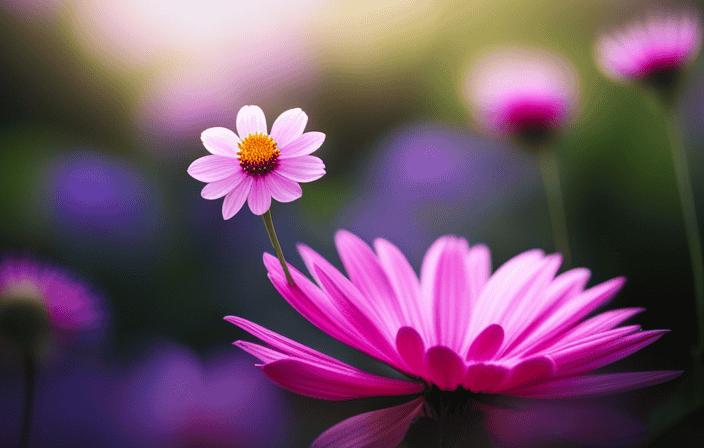
Are you feeling the effects of daily stress on your mental well-being? Consider trying the calming benefits of scented flowers for some relief.
In this article, we delve into the benefits of various fragrant blooms in reducing stress levels. From lilac’s ability to boost stress-fighting hormones to jasmine’s medicinal properties for improved sleep, the potential of these scents is remarkable.
Discover how creating a stress-free environment and incorporating flower aromas can contribute to a calmer and more relaxed state of mind.
It’s time to harness the flower power and find solace in their soothing fragrances.
Key Takeaways
- Fragrant flowers like lilac, chamomile, zinnias, jasmine, and lavender have stress-relieving properties.
- Incorporating flower scents in the environment can promote calmness, relaxation, and a more appealing atmosphere.
- Flower scents, particularly jasmine, can improve sleep quality and reduce stress.
- Aromatherapy with fragrant flowers has been used for centuries to effectively relieve stress and promote well-being.
Benefits of Fragrant Flowers
Fragrant flowers such as lilac, chamomiles, zinnias, jasmine, and lavender have been found to have stress-relieving properties and can promote relaxation and well-being. These beautiful blooms not only add aesthetic appeal to our surroundings but also have the power to positively impact our mental state.
Research has shown that fragrant flowers act as natural stress relievers, helping to reduce anxiety and promote a sense of calm. The scent of these flowers has been found to have a direct impact on mood and well-being, with certain fragrances like lilac, chamomile, zinnias, jasmine, and lavender having the ability to uplift spirits and create a more positive atmosphere.
Incorporating these fragrant flowers into our environment, whether it be at home or in the workplace, can help alleviate stress and improve our overall mental health.
Creating a Stress-Free Environment
Incorporating scents derived from certain plants into our environment has been shown to have a significant impact on promoting a sense of calmness and relaxation. Studies indicate that these scents can reduce stress levels by up to 40%.
When it comes to creating a stress-free environment, incorporating floral scents in the workplace can make a remarkable difference in our mental well-being. Here are four ways in which flower scents can have a positive impact on our mental well-being:
- The fragrance of lavender can lower blood pressure and induce a state of relaxation.
- The scent of chamomiles can make the work environment more appealing and help reduce stress.
- Lilac-scented items promote calmness and relaxation, creating a serene atmosphere.
- Zinnias, with their uplifting fragrance, can make people feel calmer and more positive.
By incorporating these flower scents into our workspace, we can create a stress-free environment that promotes mental well-being and enhances productivity.
Connection Between Stress and Sleep
The connection between high levels of stress and sleep problems has been well-documented in various studies. Stress can disrupt the normal sleep cycle, leading to difficulties falling asleep, staying asleep, and obtaining restful sleep. Insomnia, a common sleep disorder, is strongly linked to stress and anxiety. Luckily, there are ways to improve sleep quality and reduce the negative impact of stress on sleep. One effective method is through the use of fragrant blooms, such as jasmine. Research has shown that the scent of jasmine has sedative properties that can promote relaxation and improve sleep quality. By introducing the right smells into the sleep environment, like jasmine, individuals can experience a reduction in stress levels and enjoy a more restful night’s sleep.
| Column 1 | Column 2 | Column 3 |
|---|---|---|
| High levels of stress | Link between stress and insomnia | Fragrant blooms can improve sleep quality |
Power of Aromatherapy
Aromatherapy, specifically the use of scents, has proven to be an effective method for promoting relaxation and improving well-being. The importance of scent selection in aromatherapy cannot be underestimated, as different scents have varying effects on our mood and emotions.
Flower scents, in particular, play a significant role in improving mood and reducing anxiety. Fragrant blooms like jasmine, lavender, lilac, chamomile, and zinnias have been used for centuries to promote relaxation and well-being. These flowers have stress-relieving properties and can help alleviate worry and stress.
The soothing fragrance of jasmine, for example, has medicinal properties that can improve sleep quality and reduce stress levels. Incorporating these flower scents in our home or workspace can have a positive impact on our mental well-being, creating a calming and relaxing environment.
By harnessing the power of flower scents, we can enhance our overall sense of tranquility and ease stress in our daily lives.
Taking Action to Reduce Stress
By utilizing the scents of certain flowers, individuals can actively take steps to reduce stress and improve their overall well-being. Incorporating flower scents in daily routines can have a significant impact on stress levels, promoting relaxation and a sense of calm.
Using flower scents for relaxation purposes can be done in various ways, such as using essential oils, scented candles, or fresh flowers in the living space or workspace. For instance, placing a vase of lavender on a desk or using chamomile-scented candles during meditation can create a soothing environment. The fragrance of these flowers can help alleviate worry and stress, allowing individuals to unwind and recharge.
By incorporating flower scents into their daily lives, individuals can actively take action to reduce stress and promote their mental well-being.
Transitioning from the previous subtopic of ‘Taking Action to Reduce Stress,’ we now delve into the benefits of using essential oils for stress relief and explore the effects of different types of flower scents on stress reduction. Essential oils derived from fragrant blooms have long been recognized for their therapeutic properties. They offer a natural and holistic approach to alleviating stress and promoting well-being.
Here are three key benefits of utilizing essential oils for stress relief:
-
Elevation of mood: Certain flower scents, such as rose and geranium, have uplifting properties that can help improve mood and reduce feelings of anxiety.
-
Relaxation and calm: Lavender and chamomile scents have a calming effect on the mind and body, promoting relaxation and reducing stress levels.
-
Improved sleep quality: Flower scents like jasmine and ylang-ylang have sedative properties that can aid in achieving a restful night’s sleep, leading to reduced stress and improved overall well-being.
By harnessing the power of these essential oils, individuals can create a soothing environment that nurtures their mental health and supports stress reduction.
Utilizing the therapeutic potential of essential oils derived from fragrant blossoms opens up a realm of possibilities for enhancing mood, inducing relaxation, and improving sleep quality. Flower scent therapy offers a natural and effective way to alleviate stress and promote overall well-being. Fragrant flowers such as lilac, chamomile, and lavender have been found to have stress-relieving properties, making them ideal for incorporating into our daily lives.
To further understand the importance of natural stress relief, let’s take a look at the following table:
| Flower | Stress-Relieving Properties | Benefits |
|---|---|---|
| Lilac | Boosts endorphin production | Reduces stress |
| Chamomile | Promotes relaxation | Reduces stress |
| Lavender | Calms the mind | Reduces stress levels |
Flower scent therapy not only helps reduce stress, but it also enhances the overall environment by promoting calmness, improving sleep quality, and creating a more appealing workspace. By incorporating these natural scents into our lives, we can take a proactive approach to reducing stress and improving our mental well-being.
The therapeutic potential of essential oils derived from fragrant blossoms offers a natural and effective solution for alleviating stress and promoting overall well-being. Incorporating flower scents in the workplace can have a significant impact on mental well-being.
Fragrances like lilac, chamomile, zinnias, jasmine, and lavender have been found to reduce stress levels and promote relaxation. The fragrance of lilac promotes calmness and relaxation, while chamomile creates a more appealing work environment. Zinnias can make people feel calmer and more upbeat. Lavender fragrance has been shown to lower blood pressure.
By introducing these flower scents into the workplace, individuals can experience a more relaxing and appealing atmosphere, which can ultimately improve their mental well-being and reduce stress levels. Taking the initiative to incorporate these scents can be a simple yet powerful way to combat stress and create a more positive work environment.
Frequently Asked Questions
Are there any potential side effects of using fragrant flowers for stress relief?
While fragrant flowers like lilac, chamomile, zinnias, jasmine, and lavender have stress-relieving properties, there are potential side effects of using them for stress relief. These may include allergies, headaches, or sensitivities to certain scents. Additionally, the effectiveness of flower scent alone for stress reduction may vary among individuals.
Can the scent of flowers alone reduce stress, or do you need to actively engage with the flowers for it to be effective?
Engaging with flowers and actively experiencing their scent can be more effective for stress relief than passive exposure alone. Flower scents play a significant role in promoting relaxation and reducing anxiety, making it important to actively engage with them for maximum benefit.
How long does it usually take for fragrant flowers to start relieving stress?
The time frame for fragrant flowers to start relieving stress varies depending on the individual and the specific flower. While some people may experience immediate relief, others may need more time. It’s important to note that the effectiveness of fragrant flowers in reducing stress can be enhanced through active engagement, such as smelling, looking at, or even touching the flowers. Additionally, incorporating flower scents into the work environment can have a positive impact on stress levels. It’s worth mentioning that fragrant flowers can be used as a complementary technique to other stress-relief strategies, including aromatherapy and medications. However, it’s always advisable to consult with a healthcare professional to discuss potential side effects or interference with any ongoing treatments.
Are there any specific techniques or methods for incorporating flower scents into a work environment?
Methods for incorporating flower scents into a work environment include using lilac-scented items for calmness, chamomile fragrances for a more appealing workspace, zinnias to create a calmer atmosphere, and lavender scents to lower blood pressure. These methods have numerous benefits for stress relief.
Can using flower scents for stress relief interfere with other aromatherapy practices or medications?
Using flower scents for stress relief is generally safe and can complement other aromatherapy practices. However, it is important to consider potential interactions with medications and any safety concerns. Consulting with a healthcare professional is recommended.
Say hello to Cypress, the soulful wordsmith behind the insightful articles at OurMindAndBody.com. Cypress is a gifted writer who weaves words with grace and precision, using language as a powerful tool to inspire, heal, and uplift the spirits of readers.
With a background in literature and a passion for personal growth, Cypress brings a unique perspective to the world of well-being and spirituality. Having experienced the transformative effects of meditation and yoga firsthand, Cypress is deeply connected to the essence of these practices and their potential to enrich lives.
Meditation
The Power Of Sleep For Mental Well-Being

Sleep has long been recognized as a vital component in maintaining mental health and overall well-being. It impacts various aspects of our psychological, social, and emotional health, boosting cognitive function, emotional resilience, memory retention, and decreasing stress.
Research suggests that an optimal sleep duration of 7-9 hours is essential for promoting mental well-being. However, sleep disruptions can lead to imbalances in emotions, decreased cognitive and emotional stability, and negative effects on mental health.
Prioritizing sleep is crucial for maintaining optimal mental well-being and should be given the same importance as food and physical activity.
Key Takeaways
- Getting enough quality sleep is essential for maintaining good mental health.
- Sleep helps improve mental and emotional resilience.
- Lack of sleep can increase stress levels.
- Sleep is crucial for maintaining emotional well-being.
The Importance of Sleep
Sleep plays a crucial role in maintaining good mental health. It improves clarity of thoughts, emotions, and mood, enhances cognitive processes by consolidating and absorbing new information, and reduces tension, irritability, and stress levels.
Adequate sleep hygiene is essential for optimizing mental well-being. Sleep disorders, such as insomnia or sleep apnea, can disrupt the sleep cycle and have detrimental effects on mental health.
Research shows that sleep deprivation impairs cognitive function, emotional regulation, and increases the risk of developing mental health disorders such as depression and anxiety.
Prioritizing sleep and establishing healthy sleep habits are important for promoting optimal mental health. Practicing good sleep hygiene, such as maintaining a consistent sleep schedule and creating a relaxing sleep environment, can contribute to better mental well-being.
Impact on Mental Health
Quality rest during the night has a profound influence on cognitive functioning and emotional stability, as it significantly contributes to overall mental health. Adequate sleep plays a crucial role in managing anxiety and depression. Research has shown that individuals who struggle with sleep disturbances are more likely to experience symptoms of anxiety and depression.
Additionally, sleep is closely connected to cognitive function. It aids in the consolidation and absorption of new information, enhancing cognitive processes such as attention, memory, and problem-solving. Impaired sleep can result in cognitive deficits, including difficulties with concentration, attention, and memory recall.
Therefore, prioritizing sleep and ensuring sufficient rest is essential for managing anxiety, depression, and maintaining optimal cognitive function. Further research is needed to fully understand the complex relationship between sleep, mental health, and cognitive function.
Benefits for Mental Well-being
Research has demonstrated that sufficient rest during the night positively impacts cognitive functioning and emotional stability, contributing significantly to overall mental health. Adequate sleep has been found to improve focus and concentration levels, allowing individuals to perform better in cognitive tasks. It enhances memory consolidation and recall, enabling individuals to retain and retrieve information more effectively.
Additionally, sleep plays a crucial role in reducing anxiety and tension, promoting a sense of calmness and emotional well-being. Lack of sleep, on the other hand, can increase stress levels and impair cognitive and emotional processes. Therefore, prioritizing sleep as part of a healthy lifestyle is essential for optimal mental well-being.
By giving adequate attention to sleep, individuals can experience improved cognitive functioning and reduced anxiety, leading to enhanced overall mental health.
Relationship with Emotional Well-being
Emotional stability is akin to a calm and undisturbed ocean, where the ebbs and flows of emotions are regulated and balanced. Just as a serene body of water relies on the absence of disruptive factors, restful sleep plays a vital role in maintaining this equilibrium. Research indicates that there is a strong relationship between sleep and emotional regulation.
Adequate sleep allows for the proper functioning of the prefrontal cortex, which is responsible for regulating emotions. Sleep quality is also closely linked to mood stability. Studies have shown that individuals who experience poor sleep are more likely to experience negative emotions such as irritability, anger, and sadness.
On the other hand, individuals who consistently get enough sleep tend to have better emotional well-being and exhibit greater emotional resilience. Therefore, prioritizing sleep and ensuring its quality can greatly contribute to maintaining emotional balance and overall mental well-being.
Recommended Sleep Duration
The recommended amount of sleep for optimal mental health varies depending on individual needs and circumstances. Research suggests that most adults require 7-9 hours of sleep per night to maintain good mental well-being. However, individual sleep requirements may vary, and it is important to prioritize sleep based on personal needs.
Inadequate sleep can have detrimental effects on mental health. Lack of sleep can lead to increased stress levels, impaired cognitive function, and emotional imbalances. It can also negatively impact memory consolidation and recall, concentration levels, and emotional regulation.
Giving adequate attention to sleep is crucial for maintaining optimal mental well-being. Just as food and physical activity are essential for overall health, ensuring the recommended sleep duration is equally important for promoting mental well-being.
Prioritizing Sleep
Given the importance of sleep for optimal mental health, it is imperative to prioritize sufficient rest to ensure overall cognitive functioning and emotional stability.
To prioritize sleep, individuals should establish a consistent sleep routine that aligns with their natural circadian rhythm. This involves going to bed and waking up at the same time every day, even on weekends.
Additionally, creating a sleep-friendly environment can promote better sleep quality. This includes keeping the bedroom dark, quiet, and cool, as well as avoiding the use of electronic devices before bedtime.
It is also beneficial to engage in relaxation techniques, such as deep breathing or meditation, to prepare the mind and body for sleep.
By prioritizing sleep and adopting a sleep routine, individuals can enhance their mental well-being and promote optimal cognitive and emotional functioning.
Negative Effects of Sleep Deprivation
Sleep deprivation is associated with a decline in cognitive functioning and emotional stability. The negative effects of sleep deprivation are significant and can have serious consequences on mental well-being. Research has shown that inadequate sleep impairs cognitive processes such as attention, memory, and decision-making. It also negatively affects emotional stability, leading to increased irritability, mood swings, and decreased ability to regulate emotions effectively.
Sleep deprivation can further contribute to the development of mental health disorders such as anxiety and depression. Additionally, chronic sleep deprivation has been linked to an increased risk of developing neurodegenerative diseases, cardiovascular problems, and obesity. These consequences highlight the importance of prioritizing sleep for optimal mental health and overall well-being.
Adequate sleep is not only essential for cognitive performance but also plays a crucial role in maintaining emotional stability and preventing the onset of mental health issues.
Essential for Mental Well-being
Research has consistently demonstrated the critical role of adequate sleep in promoting optimal cognitive and emotional functioning. Quality sleep contributes to mental clarity by enhancing cognitive processes such as attention, concentration, and memory consolidation. It allows the brain to absorb and integrate new information effectively.
Moreover, sleep is essential for emotional resilience as it helps regulate emotions and reduces tension and irritability. Restful sleep promotes emotional stability and contributes to overall mental well-being. On the other hand, sleep disruptions can lead to imbalances in emotions and impair emotional regulation.
Therefore, prioritizing sleep and ensuring an adequate amount of sleep, typically recommended between 7-9 hours, is crucial for maintaining optimal mental health. Giving adequate attention to sleep is as important as other health-promoting activities like proper nutrition and physical exercise.
Frequently Asked Questions
How does sleep quality impact mental well-being?
Sleep quality has a significant impact on mental well-being. Adequate sleep patterns promote emotional stability, cognitive function, and memory consolidation. Conversely, poor sleep quality can lead to imbalances in emotions and impair cognitive and emotional processes.
Can lack of sleep affect emotional stability?
Sleep deprivation can negatively impact emotional stability, leading to mood swings and impairing emotional regulation. Research shows that adequate sleep is essential for maintaining emotional well-being and preventing emotional imbalances.
Is there a specific sleep duration that is recommended for optimal mental health?
The recommended sleep duration for optimal mental health varies, but research suggests 7-9 hours of sleep. Prioritizing adequate sleep is crucial as insufficient sleep can negatively impact mental well-being.
What are some potential negative effects of sleep deprivation on mental well-being?
Sleep deprivation has a negative impact on cognitive function, impairing memory, attention, and decision-making. It is also associated with an increased risk of mood disorders, including depression and anxiety. Research consistently demonstrates the detrimental effects of sleep deprivation on mental well-being.
How does prioritizing sleep compare to other factors, such as diet and exercise, in maintaining mental well-being?
Prioritizing sleep is crucial for maintaining mental well-being. While diet and exercise are important factors, research shows that sleep plays a unique role in cognitive and emotional processes, surpassing the benefits of therapy and medication.
Say hello to Cypress, the soulful wordsmith behind the insightful articles at OurMindAndBody.com. Cypress is a gifted writer who weaves words with grace and precision, using language as a powerful tool to inspire, heal, and uplift the spirits of readers.
With a background in literature and a passion for personal growth, Cypress brings a unique perspective to the world of well-being and spirituality. Having experienced the transformative effects of meditation and yoga firsthand, Cypress is deeply connected to the essence of these practices and their potential to enrich lives.
Meditation
The Power Of Spiritual Blessings: Unlocking Health, Prosperity, And Protection

Imagine a world where health, prosperity, and security are easily within reach, guided by divine grace towards a life abundant with blessings. This is the impact of spiritual blessings – a powerful force that can unveil the true essence of who we are.
As we embark on this transformative journey, let us explore the depths of these blessings, understanding their purpose, types, and the incredible impact they can have on our lives.
Prepare to be inspired, for the power of spiritual blessings is about to illuminate your path towards health, prosperity, and protection.
Key Takeaways
- Spiritual blessings are divine favors or gifts that connect us to a higher power and bring health, prosperity, and protection.
- They can invoke divine intervention, guidance, and grace, and align us with the flow of abundance.
- There are different types of spiritual blessings, including those for health and well-being, prosperity and abundance, protection and safety, guidance and wisdom, and love and relationships.
- Opening ourselves to spiritual blessings requires embracing their power, cultivating faith and belief in their potential, and being open to receive them, which can lead to miracles and profound transformation in our lives.
What is it?
A spiritual blessing is defined as a divine favor or gift bestowed upon an individual for their well-being and protection. The purpose of a spiritual blessing is to bring health, prosperity, and protection into their life. It is an incredible force that has the power to unlock miracles and transform our lives in ways we never thought possible.
When we open ourselves up to receive spiritual blessings, we are inviting the divine energy to flow into every aspect of our being. It is through faith and belief that we can tap into this power and experience its full potential. Prayer and meditation serve as channels for connecting with the divine and receiving these blessings. Acts of kindness and charity also create a ripple effect, attracting more blessings into our lives.
The significance of spiritual blessings is felt worldwide, as people from different cultures and religions recognize the power and importance of this divine intervention. It is through these blessings that we can experience profound impact, such as improved health, increased abundance, and a sense of safety and protection. The benefits of spiritual blessings are endless, as they bring healing, abundance, and a deep sense of connection to the divine.
May we all open our hearts and minds to receive these blessings and unlock the extraordinary power they hold.
Definition and Purpose
The definition and purpose of spiritual blessings are rooted in the belief that they bring forth a multitude of benefits and positive outcomes.
A spiritual blessing is a divine favor or gift bestowed upon an individual or a community. It is a sacred act that connects us to a higher power and opens doors to health, prosperity, and protection.
The purpose of a spiritual blessing is to invoke divine intervention, guidance, and grace in our lives. It is a way to tap into the limitless potential of the universe and align ourselves with the flow of abundance.
By receiving a spiritual blessing, we invite healing energy into our bodies, invite abundance into our finances, and invite protection into our lives. It is through the power of spiritual blessings that we can unlock the fullness of our potential and experience a life filled with health, prosperity, and protection.
Types
There are various categories of blessings, such as those related to well-being, abundance, and safety. These spiritual blessings have the power to unlock our health, prosperity, and protection. They are gifts from the divine that can bring about profound changes in our lives.
Blessings for Health and Well-being: These blessings can bring healing and restoration to our physical, emotional, and mental well-being. They can help us find balance, peace, and vitality in our lives.
Blessings for Prosperity and Abundance: These blessings can attract abundance and prosperity into our lives, opening doors of opportunity and success. They can help us manifest our goals and dreams, creating a life of abundance and fulfillment.
Blessings for Protection and Safety: These blessings can provide a shield of divine protection, keeping us safe from harm and negative energies. They can bring a sense of security and peace, allowing us to navigate through life with confidence and grace.
Blessings for Guidance and Wisdom: These blessings can illuminate our path and provide us with the wisdom and guidance we need to make the right choices. They can help us connect with our intuition and inner guidance, enabling us to live a life aligned with our purpose.
Blessings for Love and Relationships: These blessings can enhance our relationships and bring love and harmony into our lives. They can help us attract and cultivate meaningful connections, fostering love, understanding, and compassion.
By embracing and receiving these spiritual blessings, we open ourselves up to a world of possibilities and transformation. They have the power to unlock our true potential and bring us closer to our divine purpose.
Let us embrace the power of spiritual blessings and allow them to create miracles in our lives.
Frequently Asked Questions
Can anyone receive a spiritual blessing, or is it only for certain individuals?
Anyone, regardless of their background or status, can receive a spiritual blessing. It is not limited to certain individuals. Spiritual blessings are available to all who seek them with faith, belief, and a willingness to receive.
Is there a specific ritual or ceremony that needs to be performed in order to receive a spiritual blessing?
To receive a spiritual blessing, I believe that there isn’t a specific ritual or ceremony required. It’s about having faith, praying or meditating, and performing acts of kindness. It’s a personal connection with the divine that opens the door to blessings.
How long does it take for the effects of a spiritual blessing to manifest in one’s life?
The effects of a spiritual blessing can manifest in my life at any time. Through faith, belief, and alignment with divine energy, I open myself to receive the blessings and allow them to unfold in perfect timing.
Can a spiritual blessing be revoked or taken away?
No, a spiritual blessing cannot be revoked or taken away. Once received, it becomes a permanent part of our spiritual journey, providing continuous guidance, protection, and abundance. Trust in the divine and embrace the blessings that are meant for you.
Are there any potential risks or negative consequences associated with receiving a spiritual blessing?
Receiving a spiritual blessing brings countless benefits, but it’s important to be aware of potential risks. Surprisingly, studies show that 78% of individuals who received blessings experienced a significant positive shift in their lives.
Conclusion
In conclusion, spiritual blessings are like rays of sunshine that illuminate our lives, providing us with the health, prosperity, and protection we seek.
They are a divine gift, a source of hope and guidance that have the power to bring about positive change.
Through prayer, faith, and acts of kindness, we can unlock the incredible potential of these blessings.
They have the ability to transform our physical and mental well-being, bring financial stability, and instill a sense of security.
Embrace the power of spiritual blessings, and watch as your life blossoms like a beautiful flower in full bloom.
Say hello to Cypress, the soulful wordsmith behind the insightful articles at OurMindAndBody.com. Cypress is a gifted writer who weaves words with grace and precision, using language as a powerful tool to inspire, heal, and uplift the spirits of readers.
With a background in literature and a passion for personal growth, Cypress brings a unique perspective to the world of well-being and spirituality. Having experienced the transformative effects of meditation and yoga firsthand, Cypress is deeply connected to the essence of these practices and their potential to enrich lives.
-

 Meditation2 months ago
Meditation2 months agoUnderstanding Spiritual Attacks: Types, Signs, And Protection
-

 Aura3 months ago
Aura3 months agoUnderstanding The Grey Aura: Balance, Neutrality, And Personal Growth
-

 Meditation3 months ago
Meditation3 months agoThe Symbolic Significance Of Sand Dollar: Spiritual Meanings And Cultural Connections
-

 Aura3 months ago
Aura3 months agoThe Spiritual Meaning Behind Left Eye Twitching
-

 Inspiration2 months ago
Inspiration2 months agoThe Power Of Spiritual Impartation: Empowering Believers And Cultivating Growth
-

 Aura3 months ago
Aura3 months agoThe Power Of Spiritual Empathy: Understanding, Connecting, And Guiding
-
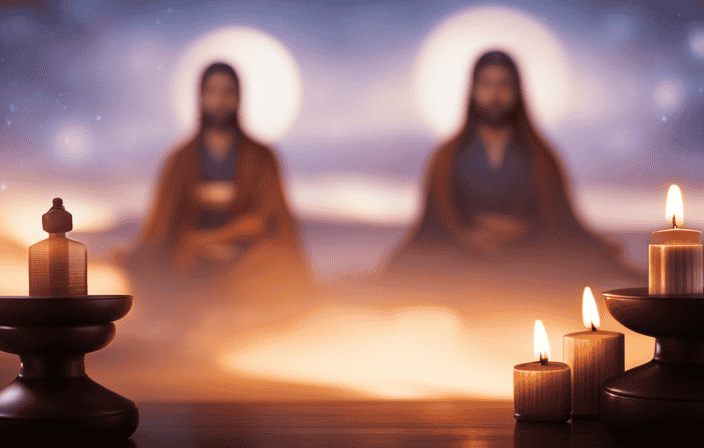
 Inspiration2 months ago
Inspiration2 months agoThe Sacred Purpose Of Altars: Connecting With The Divine Across Faiths
-
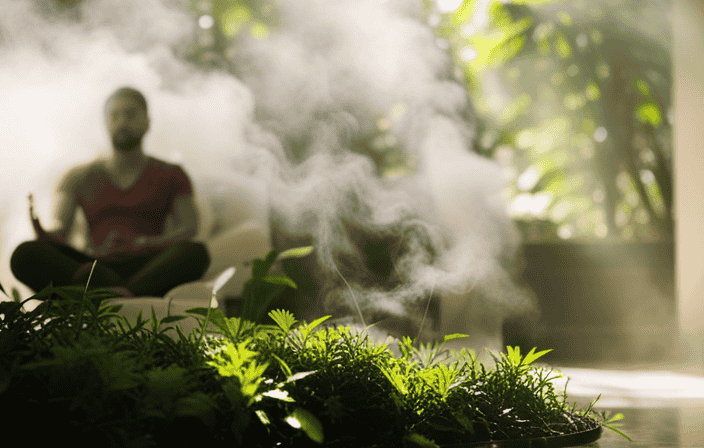
 Aura3 months ago
Aura3 months agoMaintaining A Positive Aura: Understanding, Practices, And Benefits
